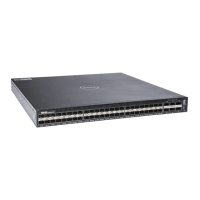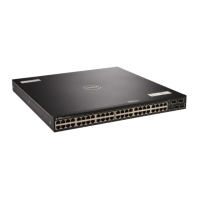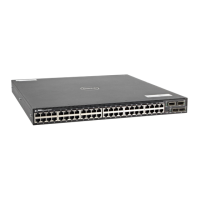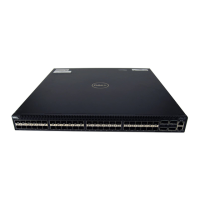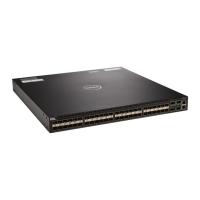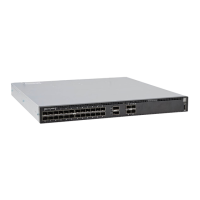Enabling and Disabling a Port using
SNMP
To enable and disable a port using SNMP, use the following commands.
1 Create an SNMP community on the Dell system.
CONFIGURATION mode
snmp-server community
2 From the Dell Networking system, identify the interface index of the port for which you want to change
the admin status.
EXEC Privilege mode
show interface
Or, from the management system, use the snmpwwalk command to identify the interface index.
3 Enter the snmpset command to change the admin status using either the object descriptor or the OID.
snmpset with descriptor: snmpset -v version -c community agent-ip
ifAdminStatus.ifindex i {1 | 2}
snmpset with OID: snmpset -v version -c community agent-ip .
1.3.6.1.2.1.2.2.1.7.ifindex i {1 | 2}
Choose integer 1 to change the admin status to Up, or 2 to change the admin status to Down.
Fetch Dynamic MAC Entries using SNMP
Dell Networking supports the RFC 1493 dot1d table for the default VLAN and the dot1q table for all other
VLANs.
NOTE: The 802.1q Q-BRIDGE MIB defines VLANs regarding 802.1d, as 802.1d itself does not define them.
As a switchport must belong a VLAN (the default VLAN or a configured VLAN), all MAC address learned on
a switchport are associated with a VLAN. For this reason, the Q-Bridge MIB is used for MAC address query.
Moreover, specific to MAC address query, the MAC address indexes dot1dTpFdbTable only for a single
forwarding database, while dot1qTpFdbTable has two indices — VLAN ID and MAC address — to allow for
multiple forwarding databases and considering that the same MAC address is learned on multiple VLANs.
The VLAN ID is added as the first index so that MAC addresses are read by the VLAN, sorted
lexicographically. The MAC address is part of the OID instance, so in this case, lexicographic order is
according to the most significant octet.
Simple Network Management Protocol (SNMP) 1004
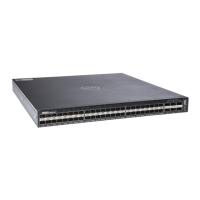
